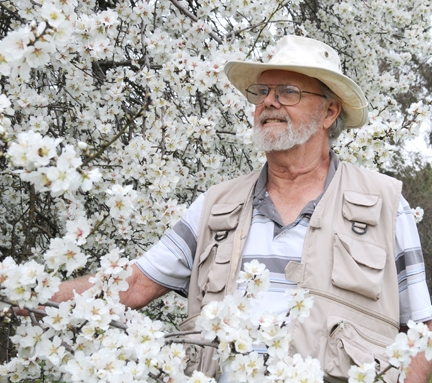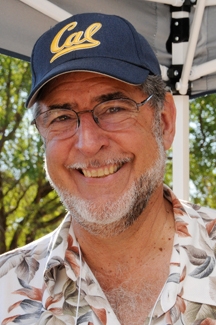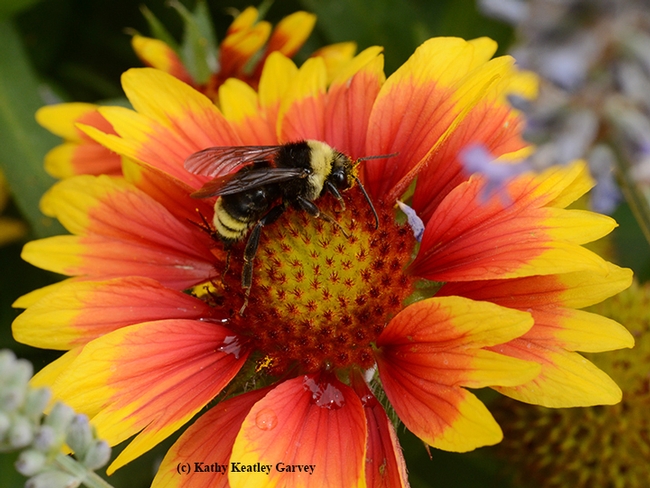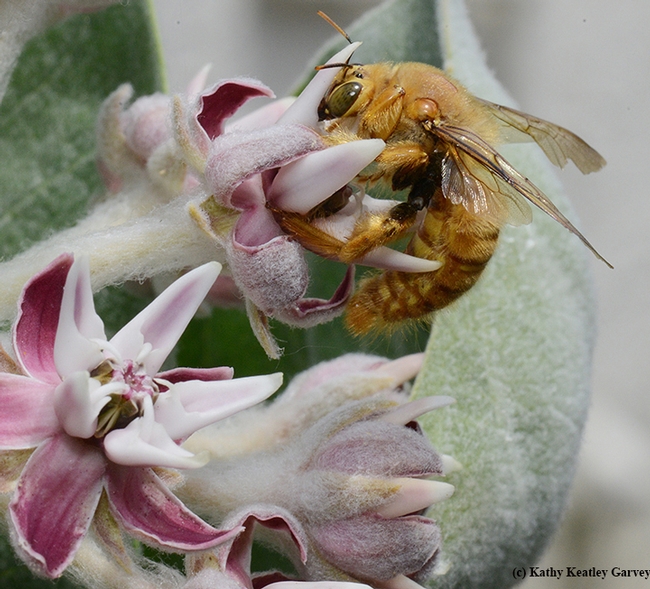
Specifically, California bees and blooms.
Even more specifically, undomesticated bees (that is, not honey bees).
Did you know that:
- Of the 4000 undomesticated bee species in the United States, some 1600 species are found in California?
- Seventy percent of bees nest in the ground, and 30 percent in pre-existing cavities?
Like honey bees, native bees are declining due to pesticides, habitat destruction and fragmentation, global climate change, drought and other extreme weather events, and lack of nutrition.

Native pollinator specialist Thorp, a Bohart Museum associate, is a distinguished emeritus professor, UC Davis Department of Entomology and Nematology and also the co-author of Bumble Bees of North America: An Identification Guide (Princeton University Press). He retired in 1994 after 30 years of teaching, research and mentoring graduate students but continues his research on pollination biology and ecology, systematics, biodiversity, and conservation of bees, especially bumble bees. Among his special interests: native bees of the vernal pool ecosystem.He maintains his office in the Harry H. Laidlaw Jr. Honey Bee Research Facility on Bee Biology Road, west of the central campus.
Native bee expert Frankie is a professor and research entomologist at UC Berkeley. His specialty is behavioral ecology of solitary bees in wildland, agricultural, and urban environments of California and Costa Rica. More information on his projects can be found at www.helpabee.org. See also the Bay Nature interview.
Coville, who holds a doctorate in entomology from UC Berkeley, is a noted insect and spider photographer. Check out the photos on his website. Coville also has a strong interest in the biology and behavior of Hymenoptera and has published papers on Trypoxylon wasps and Centris bees.
Ertter is curator of Western North American Botany at the University and Jepson Herbaria, UC Berkeley. Primary research interests include western floristics (including the East Bay), systematics of several members of the rose family (that is,, Potentilla, Ivesia, Rosa), and the history of western botany.
California Bees and Blooms showcases 22 of the most common genera (and six species of cuckoo bees). You can learn about their distinctive behavior, social structure, flight season, preferred flowers (there are more than 6500 flowering species or angiosperms in California), and enemies, such as praying mantids.
The some 200 photos in the book will help you identify native bees, such as the bumble bee and carpenter bee below. We found these foraging in our backyard pollinator garden.
Attached Images:

